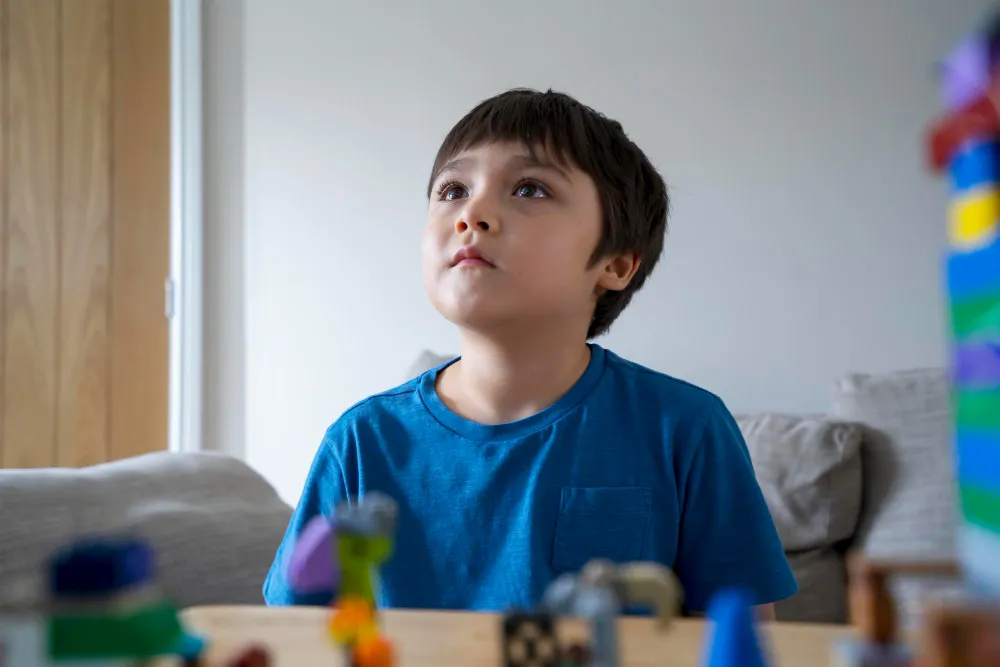When parents first begin to wonder whether their child might be autistic, one of the biggest sources of confusion is what “testing” actually means. Unlike conditions that can be confirmed with a blood test or scan, autism is diagnosed through behavioural and developmental assessments.
Key points parents should know:
- Look for patterns, not one-off behaviours – Professionals focus on how your child communicates, plays, and responds across settings, not just in one situation.
- Parent input is crucial – You’ll be asked about milestones, daily routines, and challenges. Keeping notes or a diary of your child’s behaviours can make the assessment smoother.
- Expect more than one appointment – Testing is rarely done in a single visit; it often involves interviews, observations, and questionnaires spread across sessions.
- Bring supporting documents – Reports from childcare, teachers, speech therapists, or previous health assessments can help build a clearer picture.
- Diagnosis is a starting point, not the end – The outcome guides what supports, therapies, and funding (like NDIS) your child may be eligible for.
Who can provide a diagnosis in Australia?
Autism assessments are carried out by qualified health professionals such as:
- Pediatricians – often the first specialist after a GP referral.
- Developmental pediatricians – with expertise in child development and neurodevelopmental conditions.
- Clinical psychologists – trained in administering autism diagnostic tools and behavioural assessments.
- Child neurologists or psychiatrists – sometimes involved if additional medical or developmental conditions are suspected.
In many cases, assessments are multidisciplinary, meaning a team of professionals (such as a pediatrician, psychologist, and speech or occupational therapist) work together to provide a comprehensive picture of your child’s development.
First Steps

If you’re beginning to wonder whether your child may be autistic, knowing where to start can feel overwhelming. The good news is that there’s a clear pathway you can follow to begin the process.
1. Talk to Your GP or Pediatrician
- Share your concerns openly and specifically (e.g., limited speech, avoiding eye contact, sensitivity to noise).
- Your doctor may use a developmental screening tool (such as the M-CHAT for toddlers) to gather initial information.
- Ask directly for a referral to a specialist who conducts autism assessments.
2. Document What You See at Home
- Keep notes on your child’s behaviours, routines, and challenges.
- Record examples like: difficulty with transitions, unusual play patterns, or strong sensory reactions (covering ears, avoiding certain textures).
- Bring this record to appointments—it helps professionals see patterns beyond the clinic setting.
3. Gather Supporting Reports
- If your child attends daycare, preschool, or school, ask educators for written observations.
- Collect any past reports from speech pathologists, occupational therapists, or psychologists.
- These documents provide valuable context and strengthen your referral.
4. Start Early Intervention (If Available)
- In Australia, you don’t always need to wait for a formal diagnosis to begin early intervention supports.
- Some services accept referrals based on developmental concerns alone.
- This ensures your child starts receiving help while the formal assessment process is underway.
The Evaluation Process
An autism assessment is not a single test but a series of steps designed to build a complete picture of your child’s development. While the exact process can vary depending on the clinic or professional, most assessments in Australia include the following:
1. Intake and Background Information
- Parents are asked about medical history, developmental milestones, and family background.
- You’ll usually complete forms about your child’s behaviour, social skills, and communication.
- Be as specific as possible—examples of real-life situations are more helpful than general descriptions.
2. Questionnaires and Parent Interviews
- Standardised questionnaires are given to parents (and sometimes teachers or carers).
- These cover areas such as language use, play, social interactions, repetitive behaviours, and sensory responses.
- The goal is to capture how your child behaves across different environments, not just in the clinic.
3. Direct Observation
- A specialist (such as a psychologist or pediatrician) spends time observing your child.
- This may include free play, structured activities, or problem-solving tasks.
- The professional looks at communication, eye contact, social interaction, flexibility, and play style.
4. Standardised Assessment Tools
- Commonly used tools include the ADOS-2 (Autism Diagnostic Observation Schedule) and ADI-R (Autism Diagnostic Interview-Revised).
- These provide a structured way to measure behaviours linked with autism.
- Depending on age, other developmental or cognitive tests may also be included.
5. Feedback and Recommendations
- Once the assessment is complete, you’ll receive a feedback session.
- The professional will explain whether your child meets criteria for an autism diagnosis.
- Importantly, you’ll also receive recommendations for supports and therapies tailored to your child’s needs.
Where to Get an Assessment in Australia

Families have a few different pathways to access an autism assessment. The right option often depends on your child’s age, your location, and whether you prefer a public or private service.
Public Pathways
- GP referral – Start with your GP, who can refer you to a developmental pediatrician or public hospital clinic.
- Community health centres – Some offer developmental assessments, often with longer wait times.
- Hospital-based services – Larger children’s hospitals may have autism teams, but demand is high.
Private Pathways
- Private pediatricians and psychologists – Shorter wait times than public, though costs can be higher.
- Autism-specific clinics – Many offer full diagnostic teams (pediatrician, psychologist, speech pathologist, occupational therapist).
- University clinics – Some universities provide low-cost assessments run by supervised students.
Early Childhood Options (Under 7 Years)
- Children under 7 may access early intervention supports through the NDIS Early Childhood Approach.
- You don’t always need a diagnosis to start early supports if there are clear developmental concerns.
School-Age Children
- Schools and preschools can conduct their own assessments to guide learning and support plans.
- These are not always formal medical diagnoses but can help with classroom accommodations while you pursue a full assessment.
Costs and Access
The cost of an autism assessment in Australia can vary widely depending on whether you go through the public or private system.
Public System (Low Cost, Longer Waits)
- Medicare covers public hospital or community health assessments.
- These services are usually free or low-cost, but wait times can range from several months to over a year in some areas.
Private System (Faster, Higher Cost)
- Private pediatricians, psychologists, or autism clinics often provide assessments within a few weeks or months.
- Costs can range from $1,500 to $3,000+, depending on the clinic and whether a full multidisciplinary team is involved.
Medicare Rebates
- With a GP referral and a Chronic Disease Management Plan or Helping Children with Autism plan, you may receive partial rebates for assessment sessions.
- Always confirm with the clinic whether rebates apply.
Private Health Insurance
- Some extras policies cover part of the assessment cost or therapy services afterwards (speech, OT, psychology).
- Check your policy for limits and requirements.
NDIS Pathway
- A formal diagnosis is usually needed to apply for long-term NDIS support.
- However, children under 7 can often access early intervention supports through the Early Childhood Approach without a confirmed diagnosis.
Why Start Early
- Waitlists are common in both public and private systems.
- Booking an appointment as soon as concerns arise ensures your child gets help sooner, even if it takes months to be seen.
After the Diagnosis
A formal autism diagnosis is not the end of the journey — it’s the beginning of accessing the right supports for your child. Once you have the report in hand, here’s what usually comes next:
Therapies and Supports
- Speech therapy – helps with language development, communication, and social interaction.
- Occupational therapy (OT) – supports sensory needs, daily living skills, school participation, and emotional regulation.
- Psychology – addresses behaviour strategies, anxiety, and family support.
- Social skills programs – small group or individual sessions to build confidence in interacting with peers.
Occupational Therapy: How It Helps
Occupational therapists work closely with families to:
- Support sensory processing – helping children manage sensitivities to sound, touch, movement, and more.
- Build independence – teaching daily skills such as dressing, feeding, toileting, and routines.
- Develop emotional regulation – giving children tools to manage meltdowns, frustration, or anxiety.
- Promote school readiness – improving handwriting, attention, motor skills, and adapting to classroom environments.
- Boost participation – enabling children to join in play, sports, and community activities with greater confidence.
Accessing Services
- After diagnosis, you can apply for NDIS funding to cover therapies.
- Schools may also provide additional supports through Individual Education Plans (IEPs).
- Your GP or pediatrician can continue to coordinate referrals as needed.
Final Thoughts
Getting your child tested for autism can feel overwhelming, but understanding the process makes it easier to take the first step. An assessment doesn’t just provide a diagnosis — it opens the door to supports that can help your child thrive at home, in school, and in the community.
The earlier the process begins, the sooner your child can access therapies like speech and occupational therapy, which make a real difference in daily life.
At Zenzability, our occupational therapists work with children and families to build independence, manage sensory challenges, and support participation in everyday routines. If your child has recently received a diagnosis, or you’re beginning the journey, we’re here to guide you with practical, family-centred support.

